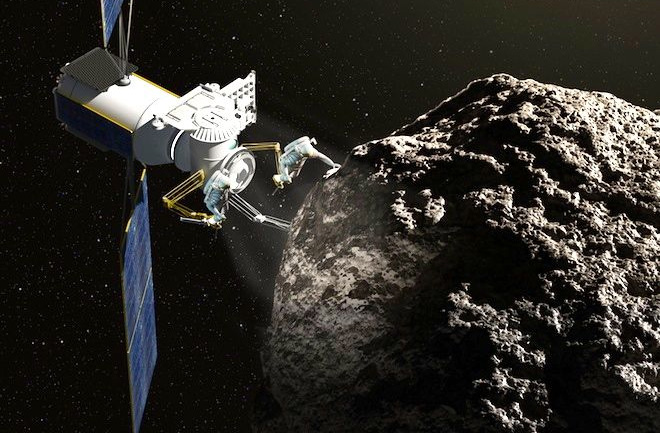

As part of the Asteroid Redirect Mission (ARM), NASA and cooperative scientists have been searching for a suitable asteroid to capture and redirect into the moon’s orbit for continual research. The ARM spacecraft is proposed to launch in 2019. Once set in orbit, the hands-on examination of the asteroid will begin in the 2020s. The mission has two main focuses: to develop the expertise needed for deep space travel to Mars and beyond, as well as providing an opportunity to test technologies that will keep Earth safe from any possible future asteroid impacts.
There are two concepts set for NASA’s ARM operation: “The first is to fully capture a very small asteroid in open space, and the second is to collect a boulder-sized sample off of a much larger asteroid. Both concepts would require redirecting an asteroid less than 32 feet (10 meters) in size into the moon’s orbit. The agency will choose between these two concepts in late 2014 and further refine the mission’s design.”
Recently a $4.9 million award has been offered for concept studies that will lead to the ARM’s success. Starting in July, a six-month research period will begin that addresses the issues of the mission. During this time the technologies, mechanics and resources needed for the mission will be perfected.
As of now, only nine asteroids have been identified that meet the criteria for possible mission nominees. Using NASA’s Spitzer Space Telescope, the most recent asteroid candidate has been identified. The telescope’s “warm” mission began in 2009 once its coolant ran out as planned, and since then Spitzer has been used for more long term and targeted observations. In particular this makes asteroid observation easier as infrared detection is the best way to study less luminous objects.
The recognition of the latest contending asteroid, named 2011 MD, for possible capture as part of the Asteroid Redirect Mission, was published June 19th, 2014 in the Astrophysical Journal Letters. Lead author of the study, Michael Mommert of Northern Arizona University says, “From its perch up in space, Spitzer can use its heat-sensitive infrared vision to spy asteroids and get better estimates of their sizes.” To be deemed valid, the asteroid must be both the right size and mass, but also the rotation rate must be considered to make its capture feasible.
2011 MD is one of the lucky asteroids that has met all necessary criteria for redirection. It has a diameter of about three to six meters (10-20 feet) with a density similar to water, this suggests that the asteroid is mostly empty space, as solid rock is usually at least three times denser than water. 2011 MD may either be a singular solid rock with a halo of particles surrounding it or a collection of smaller space rocks held in tandem by gravity. Only further observation will conclude indefinitely what its composition is.
The idea of capturing an asteroid and setting it in orbit around the moon is truly exciting! It will be the first time that humans have achieved such a massive cosmic endeavor. Building a stellar environment that fits our research needs almost seems more science fiction that reality; however, if we wish to take humans into deep space it is a necessary leap to make. Not only is the Asteroid Redirect Mission awesome in its concept, it will prove to be incredibly valuable in a scientific standpoint as well. John Grunsfeld, associate administrator for NASA’s Science Mission Directorate, says, “Observing these elusive remnants that may date from the formation of our solar system as they come close to Earth, is expanding our understanding of our world and the space it resides in.”
Sources:
NASA, Spitzer Spies an Odd, Tiny Asteroid
NASA, NASA Announces Latest Progress, Upcoming Milestones in Hunt for Asteroids